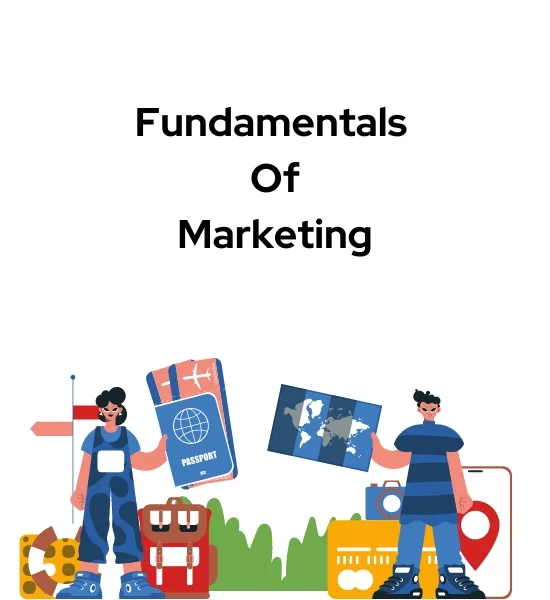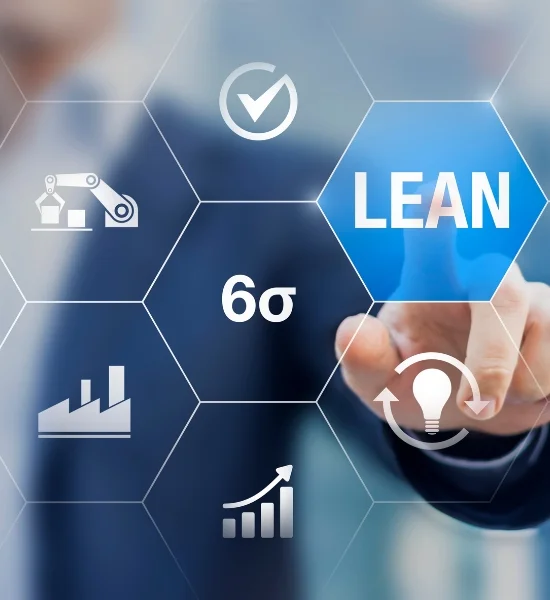Table of contents
- Introduction
- The Evolution of Sales Enablement: A Brief History
- Modern Sales Enablement (Early 2010s – Present)
- The Anatomy of Effective Sales Enablement
- Trends and Innovations Shaping Sales Enablement
- Key Benefits of a Strong Sales Enablement Strategy
- External Recognitions and Research
- Implementing Sales Enablement: Best Practices
- The Future of Sales Enablement: What’s Next?
- Conclusion
Introduction
Sales enablement has swiftly emerged as a pivotal strategy in the intricate realm of modern business. At its core, it empowers sales teams, furnishing them with the tools, resources, and knowledge to sell and nurture prospective leads effectively. After all, the business landscape has become increasingly competitive, and organizations must stay abreast of the latest sales enablement, ensuring their sales teams aren’t just equipped and operating at peak efficiency. This article delves deep into sales enablement, bringing to light its evolution, the current trends, and the undeniable importance of keeping oneself updated with the most recent research and practices.
The Evolution of Sales Enablement: A Brief History

While seeming contemporary, the concept has roots that trace back further than expected.
The Dawn of Digital Tools (Late 90s – Early 2000s)
As the new millennium approached, businesses underwent a digital awakening. The rise of CRM systems, with Salesforce leading the charge, showcased the power of leveraging digital tools. Also, This era signaled a shift, with businesses recognizing the potential of arming their sales teams with cutting-edge digital solutions.
The Age of Integration (Mid 2000s – Early 2010s)
As businesses expanded and the market grew more competitive, the need for a cohesive sales strategy became evident. This period saw the integration of marketing and sales functions, focusing on aligning content and messaging to drive sales. Furthermore, Training modules became more sophisticated, incorporating product knowledge, soft skills, and objection handling.
Modern Sales Enablement (Early 2010s – Present)
The rise of artificial intelligence, data analytics, and sophisticated digital platforms transformed sales enablement into a more strategic function. Hence, businesses began to understand that it wasn’t just about equipping the sales team and optimizing every stage of the sales process. This era brought about tools and platforms specifically designed for sales enablement, with features allowing content management, data-driven insights, and real-time feedback.
While it has come a long way from its rudimentary beginnings, it continues to evolve. Moreover, with the ever-changing market dynamics and technological advancements, understanding its history is crucial in anticipating its future trajectory and harnessing its full potential.
Read Also:- Creative Ways to Succeed at an Interview
The Anatomy of Effective Sales Enablement

After that, Sales enablement isn’t just about providing resources; it’s about optimizing every facet of the sales process to drive results. As has been noted, An effective strategy is multi-faceted, and here, we break down its core components:
Comprehensive Training:
A tool or strategy is only effective with the proper training. Because Comprehensive training bridges the gap between raw skills and real-world applications. It encompasses:
- Product Knowledge: Ensuring sales reps understand the product inside and out, confidently catering to potential client queries.
- Sales Tactics: From cold calling techniques to advanced negotiation strategies, training modules must evolve as market dynamics shift.
- Soft Skills: Building rapport, understanding customer needs, and effectively communicating solutions are crucial in sales.
Resource Availability:
A well-equipped salesperson is a successful one. Additionally, the essential resources include:
- Sales Collaterals: Brochures, case studies, presentations, and demo videos that can be tailored to the client’s needs.
- Digital Tools: CRM platforms, AI-driven analytics tools, and the modern sales rep require digital solutions to manage and optimize workflow.
- Feedback Mechanisms: Furthermore, regular check-ins, peer reviews, and open channels for feedback ensure that sales reps can continuously refine their approach.
Data-Driven Insights:
In the age of information, sales strategies should be backed by data. This includes:
- Performance Analytics: Understanding which strategies work and which don’t, allowing for real-time adjustment.
- Market Trends: Harnessing big data to anticipate market shifts and customer preferences.
- Predictive Analysis: Leveraging AI to predict which leads are more likely to convert, optimizing the sales funnel accordingly.
Read Also:- Strategies for Making C-Suite Presentations on ROI and Why
Trends and Innovations Shaping Sales Enablement

Staying ahead of the curve means keeping an eye on emerging trends and innovations. Here’s what’s shaping the future of sales enablement:
- Personalization at Scale: AI and machine learning advancements allow businesses to offer hyper-personalized experiences. Sales pitches, product demos, and follow-up emails can be tailored to individual preferences and past interactions.
- Integration of VR and AR: These technologies offer immersive product demos, virtual site tours, and simulated negotiations, creating a multi-dimensional sales experience.
- Slidecast – The Next-Gen Sales Enablement Tool: As businesses look for efficient ways to empower their sales teams, tools like Slidecast come into the picture. Slidecast offers a comprehensive sales enablement platform that integrates presentations, analytics, and collaboration features, ensuring that sales reps have everything they need at their fingertips. Slidecast redefines how sales teams operate and succeed with an intuitive interface and data-driven insights.
- Ongoing Learning Platforms: The need for continuous learning is evident. E-learning platforms, webinars, and micro-learning modules help sales reps adapt and evolve.
- Social Selling: Platforms like LinkedIn allow sales reps to build their brand, engage with potential leads, and close deals within the digital social realm.
- Voice Search and Smart Assistants: As voice search gains popularity, optimizing content and leveraging AI-driven assistants will be essential.
Embracing these trends and innovations, especially game-changing tools like Slidecast, is pivotal for any forward-thinking business aiming to revolutionize its sales process.
Read Also:- How to Be More Persuasive: The Power of Words
Key Benefits of a Strong Sales Enablement Strategy

Sales enablement is not just another buzzword; it’s a transformative approach offering tangible business benefits. A strong strategy can lead to:
Streamlined Sales Processes:
- Efficiency Boost: With the right tools and training, the time taken from lead identification to conversion is reduced significantly.
- Consistency: Standardized processes mean every customer experiences a uniform and high-quality sales journey, irrespective of the sales representative they interact with.
Enhanced Sales Rep Performance:
- Skill Enhancement: Regular training and resource access mean sales reps continuously improve, learn, and refine their approach.
- Confidence Boost: When salespeople are well-prepared and have the right tools, they approach potential clients with heightened confidence, leading to better interactions and outcomes.
Better Customer Experience:
- Personalized Interactions: With data-driven insights, sales reps can tailor their approach to cater to individual client needs and preferences.
- Quick Problem Resolution: With all the necessary information and tools, customer concerns or queries can be addressed promptly and effectively.
Read Also:- How To Reach More Customers With Blogging?
External Recognitions and Research

The impact and importance of sales enablement are not just our observations. Many reputable institutions and companies have delved into this domain, offering insightful research that aligns with and expands upon our understanding. Some notable mentions include:
- Forrester Research: A pioneer in market research, Forrester’s studies on sales enablement highlight the strategy’s impact on B2B sales and how businesses can leverage it to stay ahead of competitors.
- CSO Insights: Their annual Sales Enablement Study offers an in-depth look into the state of sales enablement, its evolution, and the tangible benefits it brings.
- Gartner: Known for its extensive market analyses, Gartner’s insights into sales enablement emphasize its role in the overall sales tech stack and how businesses can integrate it seamlessly.
Exploring these external studies provides a comprehensive understanding of sales enablement, confirming its pivotal role in modern business strategy. These trusted sources underscore the significance and potential of a well-executed plan.
Implementing Sales Enablement: Best Practices

Here are some best practices to guide your implementation:
- Stakeholder Alignment: Ensure that all stakeholders, from top management to frontline sales reps, understand and buy into the sales enablement vision.
- Choose the Right Tools: Not all businesses are the same. Invest time researching and selecting tools that align with your business’s unique needs and goals.
- Iterative Training: Sales enablement is not a one-off effort. Regular training sessions, updates, and refreshers are crucial to keep the sales team in sync with evolving market dynamics.
- Feedback Loops: Create mechanisms for sales reps to provide feedback on the tools, resources, and training they receive. This ensures continuous improvement and adaptability.
- Monitor and Measure: Implement key performance indicators (KPIs) to gauge the effectiveness of your sales enablement strategy. Regularly review and adjust based on these insights.
- Stay Updated: The world of sales enablement is ever-evolving. Subscribing to industry publications, attending seminars, and networking with peers can ensure you’re always on the cutting edge.
Embarking on a sales enablement journey can be transformative, but it’s essential to approach it methodically and strategically. Following these best practices can set your business up for sustained sales success.
Read Also:- 27 Best Paying Jobs in Basic Industries
The Future of Sales Enablement: What’s Next?

As dynamic as the realm of sales enablement is, forecasting its trajectory can provide businesses with a strategic edge. Here’s a glimpse into what the future might hold:
AI-Powered Personalization
While personalization isn’t new, the extent to which AI will drive it is unprecedented. Imagine tools that analyze a client’s past interactions, industry trends, and even global news to tailor real-time pitches.
Remote Sales Ecosystem
The recent global events have accelerated the shift towards remote work. Sales enablement tools will soon be optimized for remote pitches, virtual product demos, and digital team collaborations.
Immersive Selling Experience
Beyond VR and AR, integrating technologies like 3D holography can redefine immersive selling, making remote pitches as impactful as face-to-face meetings.
Real-time Sales Analytics
As data processing becomes more sophisticated, sales teams will access real-time analytics, adjusting their strategies instantaneously based on live feedback.
Sustainable Selling
With increasing emphasis on sustainability and ethical business practices, sales enablement will include tools and training modules focusing on eco-friendly and socially responsible selling.
Embracing these anticipated advancements will be crucial for businesses to stay competitive and innovative in the ever-evolving sales landscape.
Read Also:- Innovative Approaches to Creative Counseling
Conclusion
Far from being a mere buzzword, sales enablement has cemented its position as a cornerstone of effective sales strategy. From its historical evolution to its transformative potential, its impact on businesses is undeniable. As we’ve delved into its intricacies, from real-world success stories to anticipated future trends, one thing remains clear: A robust strategy is no longer an option – it’s a necessity.
Though challenging for businesses ready to embark on this journey, the road ahead promises substantial rewards: a streamlined sales process, an empowered sales team, and an unparalleled customer experience. By embracing the tools, training, and tactics of sales enablement, businesses are not just preparing for the future – they’re shaping it.


















